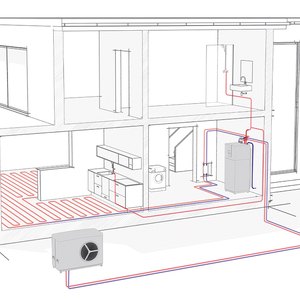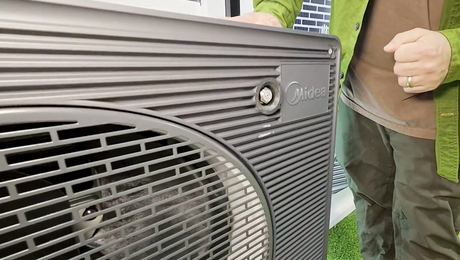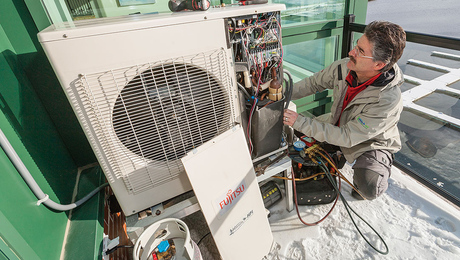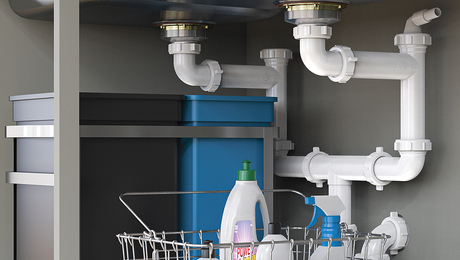10 Steps to Better Washer and Dryer Installation
The long life and dutiful service you expect from these machines depends on the quality of the installation.

I make my living installing and repairing appliances, including washers and dryers. A good percentage of my laundry service calls easily could have been avoided if the machines had been installed properly.
Over the past 12 years, I’ve developed some guidelines for installing washers and dryers to ensure that everything fits like it should and functions the way it’s supposed to. If you follow this advice, you’ll reduce the chances that the washer-drain hose will pump water all over the second-floor laundry room on Christmas Eve, that the dryer will take hours to dry a single load because of kinked or clogged ducting, or that you’ll ever have to call a guy like me.
Before you buy
1. Take the time to measure
I can’t stress this enough: Measure the space where you want to install the new washer and dryer, and take note of plumbing, electrical, and vent locations. Be especially accurate with measurements for a laundry area surrounded by built-in cabinetry and for machines stacked in a closet. These two installation scenarios have the smallest margins for error. Keep in mind that there aren’t many standard dimensions for washers and dryers, so you need to compare the measurements of your space carefully with the detailed technical specs for each model. Look for potential problems, and be sure that the space can accommodate any accessories you’re considering, such as pedestals and stacking kits.
2. Keep the appliances serviceable
Every laundry machine will break or malfunction at some point. Most service companies refuse to do the repair if one person can’t get an appliance out and back into its space without damaging floors, walls, or cabinets.
3. Know when to hire help
If the installation is especially complicated, consider buying your appliances from a local dealer that specializes in working with custom-home builders and remodelers. They usually have contact with specialized appliance-installation subcontractors who have the experience that comes from years of custom appliance installations.
The Washer
4. Spin cycles should spin
Remove the tub shipping supports before you install the washing machine. All front loaders have some type of bolt or other means of immobilizing the tub so that the suspension parts are not damaged during shipment. If you start a cycle without removing them, you’ll damage the tub and/or motor.
5. Level the washer in both directions
It’s especially important that front loaders are level, or they will walk or vibrate badly. On wood-framed floors, especially long-spanning I-joists, this can be severe enough to shake the whole house. It’s also critical that the washer be absolutely level if you’re going to stack a dryer on it; small washer vibrations will be magnified at the top of the dryer, possibly moving it enough to damage surrounding cabinets.

6. Don’t skimp on the hoses and valves
If the machine includes rubber supply hoses with lightweight stamped-metal ends, throw them away. At $40, durable stainless-steel hoses are cheap insurance against a leak. Also, ball valves are the pricier option, at around $30 for the single-handle model shown here, but they are far quicker and easier to shut off in an emergency, and more durable than gate valves over the long haul
7. Secure the drain hose
After snapping the hose into the U-shaped carrier, secure it to something solid so that it can’t lift out of the standpipe when the drain pump kicks on. If you can fasten the carrier to the wall, great, but it’s often not possible. Zip ties come in handy for securing the hose, and bundling the supply and drain hoses makes for a tidy installation. For recessed boxes that house the supply valves and the standpipe, insert the drain hose at least 1 ft. into the standpipe. This way, the hose will hit the top of the box before it can lift out.
The Dryer
8. Duct length is crucial
When you check the technical specs of the dryers you’re considering, find the allowable duct length for each machine. (This information is typically buried somewhere in the installation manual, which you can find online if yours is missing.) The allowable duct length can vary by more than 60 ft., depending on the model. Also, be sure to count each elbow in the duct run at the equivalent straight-run length listed in the manual.
9. Flex duct is OK, to an extent
If I had my say, dryer ducting would always be rigid galvanized steel and never the thin aluminum duct that’s often sold as dryer ducting. Flexible ducting, though, is sometimes helpful. I use it between the dryer and the rigid duct to allow me to connect the two and to push the dryer in place. I typically use less than 24 in., often much less, but in some instances, as with a stacked dryer in a closet, the flexible duct must be slightly longer so that you can connect the dryer and push it in place.

10. Use tape, not clamps
Metal worm-drive clamps won’t give you an airtight seal at joints in dryer ductwork, and the leaking air traps lint around the joints and causes an obstruction over time. Duct seams should be sealed with high-quality tape. Never use cloth duct tape; it will dry out and fail. Aluminum foil tape stands up over time, but the best option is mastic tape such as Nashua 324-A. This tape has foil on the outside, a thin layer of plastic in the middle, and then an aggressive adhesive. Before using any tape, clean the manufacturing-oil residue off the galvanized-steel duct with a degreasing household cleanser, or the adhesive could fail.
Photos: Rodney Diaz. Drawing: Jackie Rogers.


























View Comments
The best way to duct a clothes dryer is to buy a ductless one, and skip the hole in the wall entirely. They are usually a combination of heat-exchanger and compressor, are extremely efficient, and present no danger of fire due to build up in a duct. The water from the wet clothes drains into the washer drain.
Also notice that instead of buying platforms, we made on, with enough space underneath to hold clothesbaskets -- pre-sorted laundry, and always easy to see when it's time to do a load.
Dear Fellow Washers Wiggles,
Do you have a fix for high RPM vibration into surrounding walls & floor joists? I just installed an ASKO stackable into a space where a very small footprint Maytag (no longer made) had rested for 30 years. The vibration in the kitchen is unreal.(this is at 1/2 speed or minimum spin. high speed is 1600RPM)
Thanks!